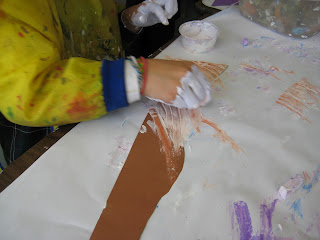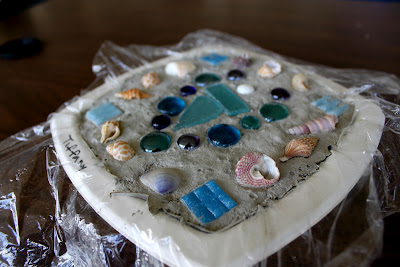Another Van Gogh lesson doesn't seem incredibly original, but this project from Deep Space Sparkle explores the fun technique of chalk pastel dipped into tempera paint. This was also my Grade 2 students' favourite project this year and last, so it is definitely staying in the repertoire.
It requires some organization, quite a bit of paper cutting, and then a lot of clean-up....but when the results are as stunning as they are, it totally makes it worth it. And if you have the energy, this is best done at the end of the year when all of your pastels are broken anyways.
It's a great lesson to reinforce the concepts of foreground, middle-ground, and background, as well the design principle of movement. I like to talk about how Van Gogh's paintings have a thick impasto, and tell students that it is even rumoured that deep within the layers of his paint, some of it might still be wet. I like to emphasize that like Van Gogh, students should aim to create lots of texture in their paintings, not worrying about leaving blobs and clumps of the paint on the paper. They love this.
In her lesson, Patti suggests using white or coloured tempera paint. We just used white, which I put into shallow plastic cups, and then dipped in the coloured chalk pastel.
This project took us about three 45 minute blocks.

















